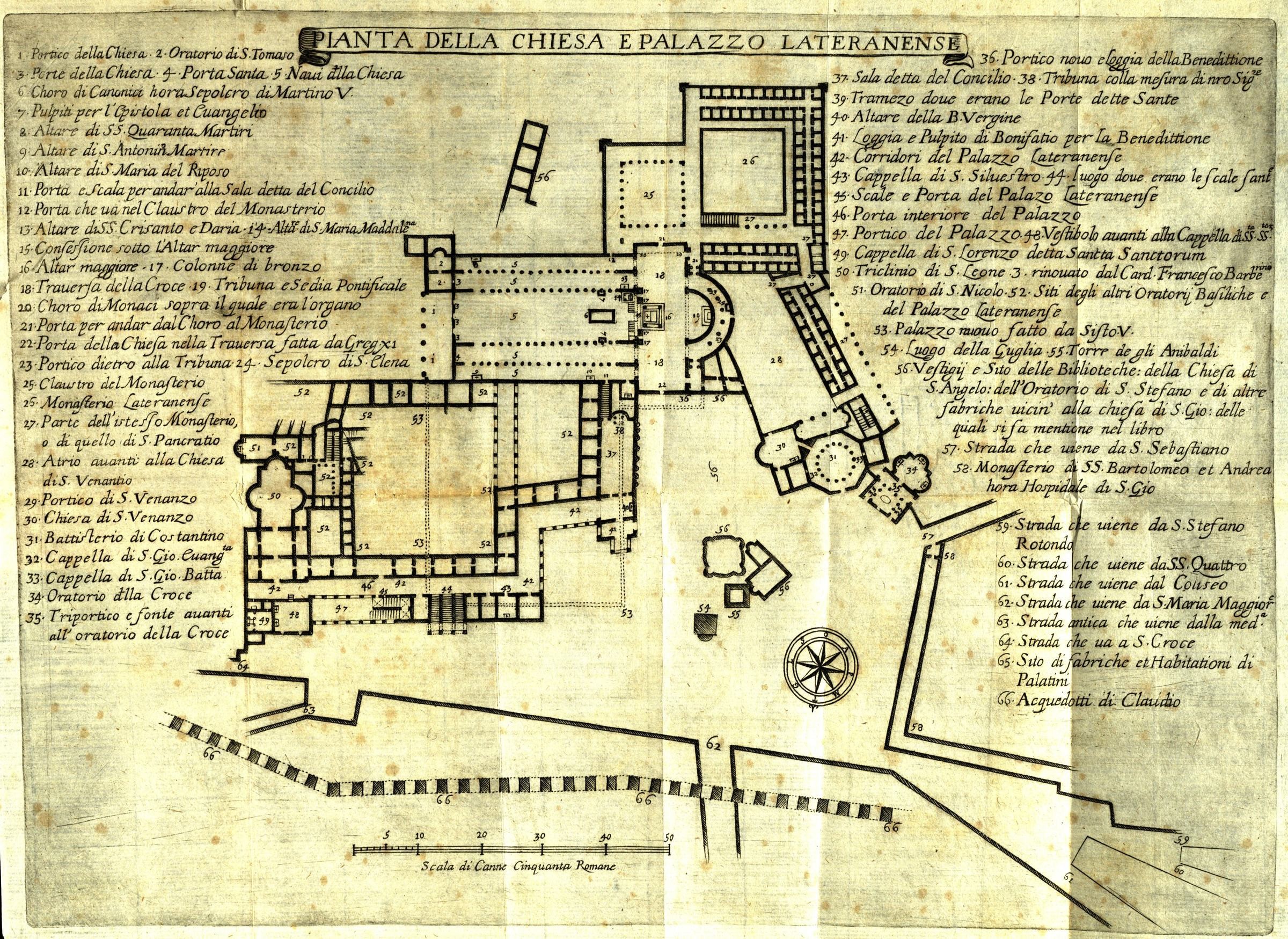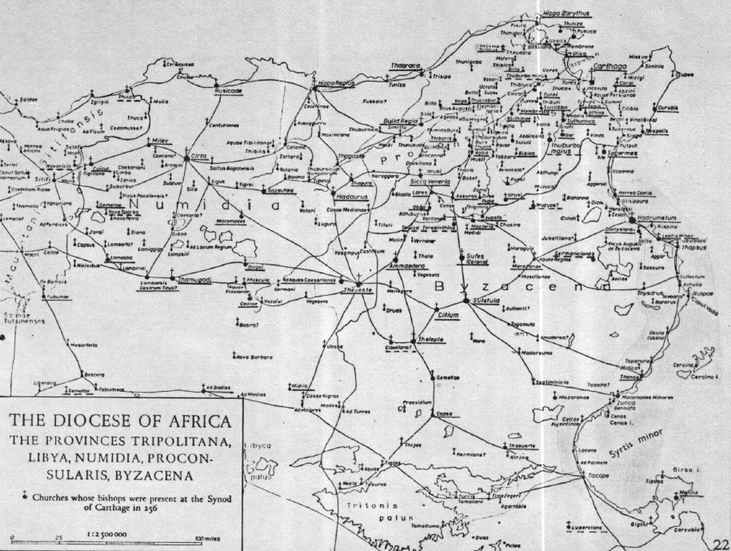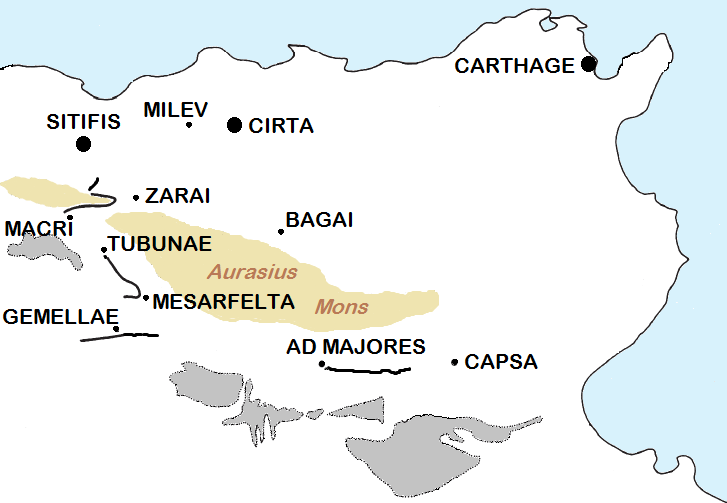|
Donatus Of Casae Nigrae
Donatus Magnus, also known as Donatus of Casae Nigrae, became leader of a schismatic sect known as the Donatists in North Africa, Algeria. He is believed to have died in exile around 355. Life Little is known of his early life because of the complete loss of his correspondence and written works. He first appears in Church records as Donatus of Casae Nigrae in October 313 when Pope Miltiades found him guilty of re-baptizing clergy who had lapsed and of forming a schism within the Church. Casae was a settlement located on the extreme southern edge of the plains of Numidia, south of Theveste, an area settled by people predominantly of Berber descent. The Schism During the wave of persecutions of Christians by the Roman Emperor Diocletian, in order to avoid torture, exile, or death, some Church leaders turned over their scriptures, liturgical books, and other church goods to the imperial authorities. Such people became known as ''traditors'' ("surrenderers"). The schism betwe ... [...More Info...] [...Related Items...] OR: [Wikipedia] [Google] [Baidu] |
Donatus From Nuremberg Chronicle
The name Donatus can refer to the following people: People * One of several List of saints named Donatus, saints named Donatus * Aelius Donatus, a Roman grammarian and teacher of rhetoric * Donatus Magnus, a 4th-century bishop of Carthage and leader of the Donatist sect of Christianity * Donatus (Hun), Donatus (d. 412), a representative of the Huns, possibly their king or just an ambassador; or a Roman living among the Huns * Donatus (5th century), a monk who left Roman Africa during one of the Vandal persecutions and established monastic life in Valencia, Spain * Donatus (bishop of Killala), ''fl.'' 1244 * Tiberius Claudius Donatus, a Roman grammarian known for his commentary on the ''Aeneid'' Places * St. Donatus, Iowa, a community in the United States * Saint Donatus Catholic Church, a parish of the Roman Catholic Church located in St. Donatus, Iowa See also * Donato (other) * San Donato (other) {{disambiguation pl:Donat (imię) ... [...More Info...] [...Related Items...] OR: [Wikipedia] [Google] [Baidu] |
Bishop Of Carthage
The Archdiocese of Carthage, also known as the Church of Carthage, was a Latin Catholic diocese established in Carthage, Roman Empire, in the 2nd century. Agrippin was the first named bishop, around 230 AD. The temporal importance of the city of Carthage in the Roman Empire had previously been restored by Julius Caesar and Augustus. When Christianity became firmly established around the Roman province of Africa Proconsulare, Carthage became its natural ecclesiastical seat. Carthage subsequently exercised informal primacy as an archdiocese, being the most important center of Christianity in the whole of Roman Africa, corresponding to most of today's Mediterranean coast and inland of Northern Africa. As such, it enjoyed honorary title of patriarch as well as primate of Africa: Pope Leo I confirmed the primacy of the bishop of Carthage in 446: "Indeed, after the Roman Bishop, the leading Bishop and metropolitan for all Africa is the Bishop of Carthage."François Decret, ''Early C ... [...More Info...] [...Related Items...] OR: [Wikipedia] [Google] [Baidu] |
Reticius
Saint Reticius (or ''Rheticus, Rheticius'') (french: Saint Rhétice, link=no) (early 4th century) was a bishop of Autun, the first one known to history, according to the ''Catholic Encyclopedia''. He was a Gallo-Roman, and an ecclesiastical writer, and served as bishop of this see from around 310 to 334 AD. He traveled on behalf of Emperor Constantine the Great in 313 to the Synod of Rome and in 314 to the Synod of Arles, in order to bring about a resolution to the dispute with the Donatists. Gregory of Tours praised Reticius in his writings. Saint Jerome mentions Reticius in his '' De Viris Illustribus'': :Reticius, bishop of Autun, among the Aedui, had a great reputation in Gaul in the reign of :Constantine. I have read his commentaries ''On the Song of Songs'' and another great volume :''Against Novatian'' but besides these, I have found no works of his. Reticius was succeeded by Cassian of Autun Saint Cassian of Autun (french: Cassien) (died ca. 350 AD) was a 4th-cen ... [...More Info...] [...Related Items...] OR: [Wikipedia] [Google] [Baidu] |
Lateran Palace
The Lateran Palace ( la, Palatium Lateranense), formally the Apostolic Palace of the Lateran ( la, Palatium Apostolicum Lateranense), is an ancient palace of the Roman Empire and later the main papal residence in southeast Rome. Located on St. John's Square in Lateran on the Caelian Hill, the palace is adjacent to the Archbasilica of Saint John Lateran, the cathedral church of Rome. From the fourth century, the palace was the principal residence of the popes, and continued so for about a thousand years until the Apostolic Residence ultimately moved to the Vatican. The palace is now used by the Vatican Historical Museum, which illustrates the history of the Papal States. The palace also houses the offices of the Vicariate of Rome, as well as the residential apartments of the Cardinal Vicar, the pope's delegate for the daily administration of the diocese. Until 1970, the palace was also home to the important collections of the Lateran Museum, now dispersed among other parts of th ... [...More Info...] [...Related Items...] OR: [Wikipedia] [Google] [Baidu] |
Constantine The Great
Constantine I ( , ; la, Flavius Valerius Constantinus, ; ; 27 February 22 May 337), also known as Constantine the Great, was Roman emperor from AD 306 to 337, the first one to convert to Christianity. Born in Naissus, Dacia Mediterranea (now Niš, Serbia), he was the son of Flavius Constantius, a Roman army officer of Illyrian origin who had been one of the four rulers of the Tetrarchy. His mother, Helena, was a Greek Christian of low birth. Later canonized as a saint, she is traditionally attributed with the conversion of her son. Constantine served with distinction under the Roman emperors Diocletian and Galerius. He began his career by campaigning in the eastern provinces (against the Persians) before being recalled in the west (in AD 305) to fight alongside his father in Britain. After his father's death in 306, Constantine became emperor. He was acclaimed by his army at Eboracum ( York, England), and eventually emerged victorious in the civil wars against ... [...More Info...] [...Related Items...] OR: [Wikipedia] [Google] [Baidu] |
Primate Of North Africa
The Primate of Africa is an honorific title in the Roman Catholic church, but in early Christianity was the leading bishop (''primas'') in Africa except for Mauretania which was under the bishop of Rome and Egypt which was suffragan to Alexandria. There were at times primates in Numidia and Byzacena,François Decret, ''Early Christianity in North Africa'' (James Clarke & Co, 25 Dec. 2014) p86. and Donatist claimants, but generally the role of the bishop of Carthage was seen as total. In the 3rd century, at the time of Cyprian, the bishop of Carthage exercised a real though not formalized primacy in the Early African Church, not only in the Roman province of Proconsular Africa in the broadest sense (even when divided into three provinces including Byzacena and Tripolitania) but also, in some supra- metropolitan form, over the Church in Numidia and Mauretania. The provincial primacy was associated with the senior bishop in the province rather than with a particular see and was ... [...More Info...] [...Related Items...] OR: [Wikipedia] [Google] [Baidu] |
Majorinus
Majorinus was the leader of a schismatic Christian sect in Roman North Africa known as the Donatists. Life Very little is known of his early life, as Donatist writings were mostly destroyed in the following years. What we can garner of his life and beliefs is accessed through what his enemies said against him. He had been a reader or a lector in the church at Carthage, during the time that Caecilianus, had been an archdeacon at Carthage and Mesurius was Bishop of Carthage. He seems to have also had some domestic office in the household of a Roman noblewoman Lucilla. In 311 he was chosen as Bishop of Carthage, by a council of 70 bishops in Cirta led by Secundus of Tigisis. Secundus of Tigisis was the primate of Numidia and as such was meant to be consulted prior to the appointment of Caecilianus. This appointment was intended to depose the existing recently appointed bishop Caecilianus. Caecilianus had been the understudy of the recently deceased bishop Mensurius con ... [...More Info...] [...Related Items...] OR: [Wikipedia] [Google] [Baidu] |
Basilica
In Ancient Roman architecture, a basilica is a large public building with multiple functions, typically built alongside the town's Forum (Roman), forum. The basilica was in the Latin West equivalent to a stoa in the Greek East. The building gave its name to the architectural form of the basilica. Originally, a basilica was an ancient Roman architecture, ancient Roman public building, where courts were held, as well as serving other official and public functions. Basilicas are typically rectangular buildings with a central nave flanked by two or more longitudinal aisles, with the roof at two levels, being higher in the centre over the nave to admit a clerestory and lower over the side-aisles. An apse at one end, or less frequently at both ends or on the side, usually contained the raised Tribune (architecture), tribunal occupied by the Roman magistrates. The basilica was centrally located in every Roman town, usually adjacent to the forum and often opposite a temple in imperia ... [...More Info...] [...Related Items...] OR: [Wikipedia] [Google] [Baidu] |
Cirta
Cirta, also known by various other names in antiquity, was the ancient Berber and Roman settlement which later became Constantine, Algeria. Cirta was the capital city of the Berber kingdom of Numidia; its strategically important port city was Russicada. Although Numidia was a key ally of the ancient Roman Republic during the Punic Wars (264–146BC), Cirta was subject to Roman invasions during the 2nd and 1st centuriesBC. Eventually it fell under Roman dominion during the time of Julius Caesar. Cirta was then repopulated with Roman colonists by Caesar and Augustus and was surrounded by the autonomous territory of a " Confederation of four free Roman cities" (with Chullu, Russicada, and Milevum), ruled initially by Publius Sittius. The city was destroyed in the beginning of the 4thcentury and was rebuilt by the Roman emperor Constantine the Great, who gave his name to the newly constructed city, Constantine. The Vandals damaged Cirta, but emperor reconquered and impr ... [...More Info...] [...Related Items...] OR: [Wikipedia] [Google] [Baidu] |
Secundus Of Tigisis
Secundus of Tigisis () was an early church leader and primate of Numidia. He was a leading organiser of the early Donatist movement in Carthage. Biography Personal life Little is known about Secundus' personal life. He lived in Numidia during the Diocletianic Persecution and was Bishop of Tigisis. Later in life, Secundus was convicted by a Roman court of being a traditor and a thief, but it is possible that this verdict was motivated by Secundus' support of the Donatist Schism. He is mentioned in the Notitia Provinciarum et Civitatum Africae. Council of Cirta (305) The Council of Cirta was held in the spring of AD305 to elect a new bishop for the town. The Bishops present included Secundus of Tigisis, Donatus of Mascula, Marinus of Aquae Tibilitanae, Donutus of Calama, Purpurius of Limata, Victor of Garbis, Felix of Rotarium, Nabor of Centurio, Silvanus, and Secundus the younger. All of those present were accused of crimes, including thievery, book burning, and burning ... [...More Info...] [...Related Items...] OR: [Wikipedia] [Google] [Baidu] |
Felix Of Aptungi
Felix, Bishop of Aptunga, in proconsular Africa was a 4th-century churchman, at the center of the Donatist controversy. Felix was one of those who laid hands on Caecilian as Bishop of Carthage in 311AD. This act led to a major schism in Early North African Christianity. Biography Felix of Abthugni, the bishop of Aptunga had escaped arrest during the Diocletian Persecution in 303. He held an administrative office within the town council, and was on friendly relations with the local magistrate who was to implement the persecution. It is therefore probable he was warned of the coming persecution, and was away at the time. The cathedral and some documents were destroyed in his absence. Felix consecrated Caecilian as Bishop of Carthage in 311. The proto-Donatist in a Council at Cirta called this consecration invalid because of Felix's participation. However, Felix was considered to have been a '' traditor'' during the Diocletian Persecution and as such Caecilian's consecration w ... [...More Info...] [...Related Items...] OR: [Wikipedia] [Google] [Baidu] |
Primate Of Africa
The Primate of Africa is an honorific title in the Roman Catholic church, but in early Christianity was the leading bishop (''primas'') in Africa except for Mauretania which was under the bishop of Rome and Egypt which was suffragan to Alexandria. There were at times primates in Numidia and Byzacena,François Decret, ''Early Christianity in North Africa'' (James Clarke & Co, 25 Dec. 2014) p86. and Donatist claimants, but generally the role of the bishop of Carthage was seen as total. In the 3rd century, at the time of Cyprian, the bishop of Carthage exercised a real though not formalized primacy in the Early African Church, not only in the Roman province of Proconsular Africa in the broadest sense (even when divided into three provinces including Byzacena and Tripolitania) but also, in some supra- metropolitan form, over the Church in Numidia and Mauretania. The provincial primacy was associated with the senior bishop in the province rather than with a particular see and was ... [...More Info...] [...Related Items...] OR: [Wikipedia] [Google] [Baidu] |






